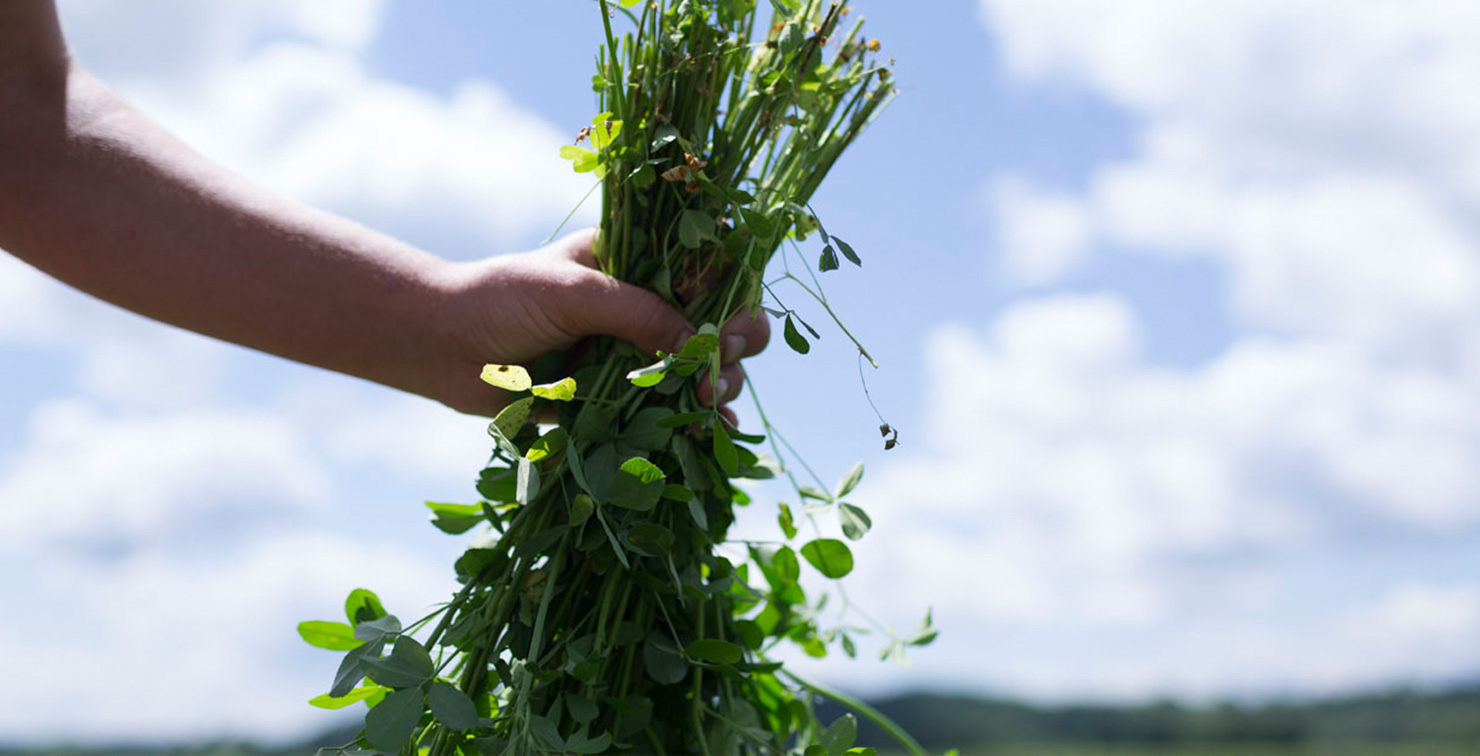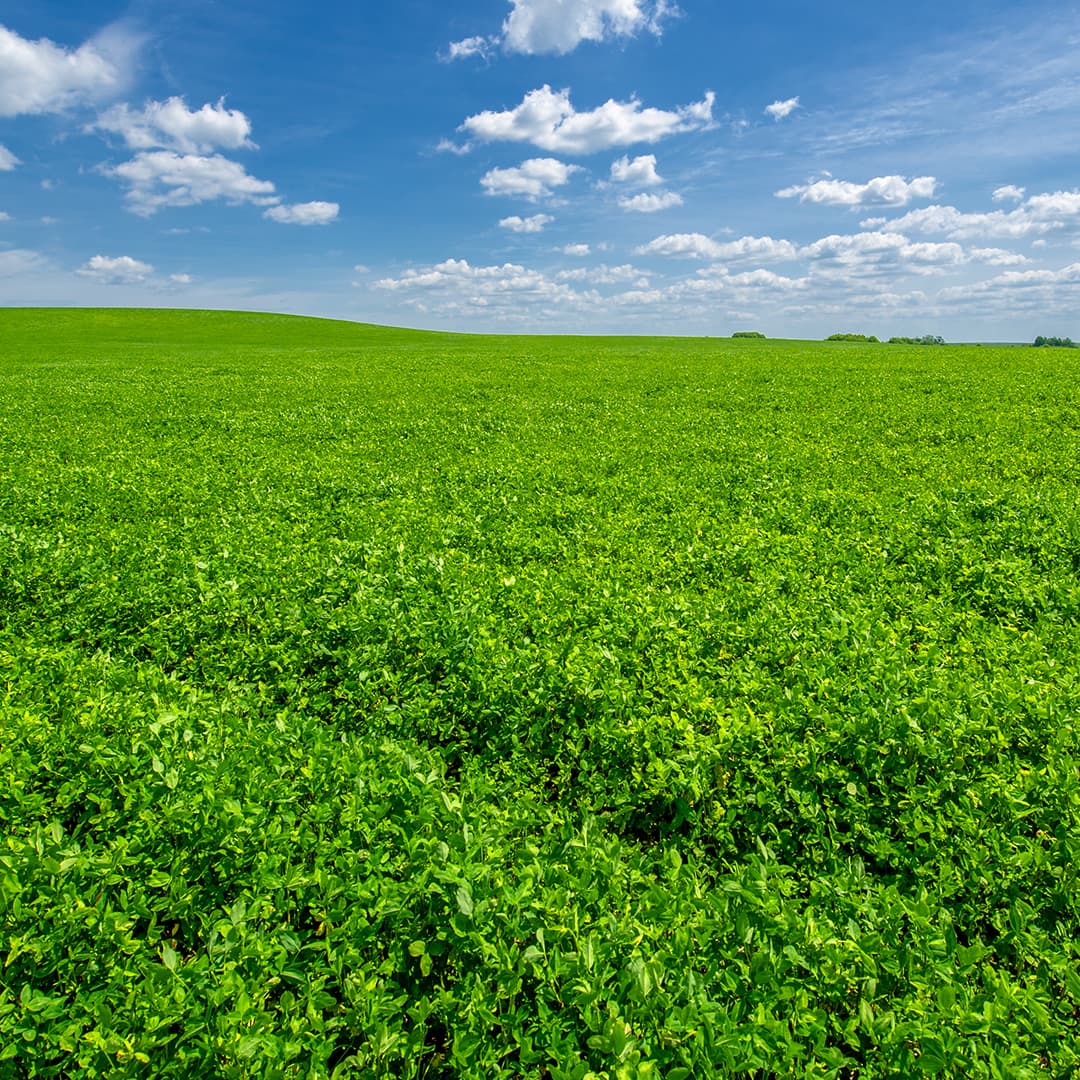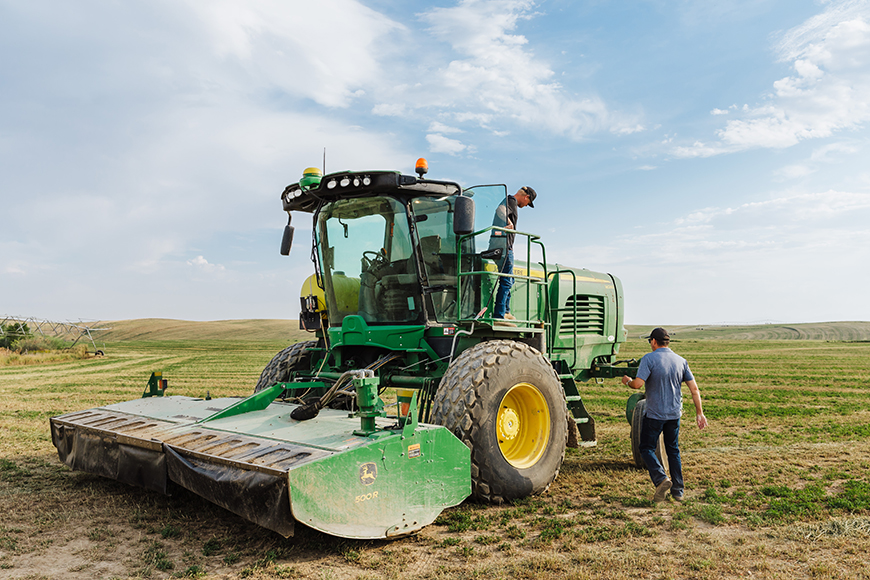The agricultural world has been abuzz with conversations regarding sustainability, regenerative agriculture, and carbon credits.
Rightfully so with the new administration’s vowed focus on improving overall sustainability and trying to establish a financially incentivized carbon credit market. Everyone from private industry and farmers to universities are increasing their interests in how we can best position agricultural practices to take full advantage of what is likely a very real opportunity for farmers and ranchers alike.
While the idea of carbon markets is nothing new, and has been talked about for decades, what is exciting is the fact that we are finally seeing checks in farmers hands. To date, a lot of the focus has been on practices such as including cover crops in cropping rotations or switching from conventional tillage to strip tillage or no-till. However, a very large piece of the puzzle has been overlooked in many of these conversations- perennial forages, and in particular, alfalfa.
Table 1. Summary of potential contributions of alfalfa to soil health and sustainability parameters, compared to corn, soy, and cover crops. Note, cover crops includes a large variety of species, and so the benefits can vary based on which species is used and how it is being utilized.

When looking at some of the common parameters of soil health in Table 1, which are also used in many of the conversations surrounding the carbon market, we see that alfalfa has an improved benefit over cover crops in several of the categories. This is not to diminish the role cover crops play in soil health and sustainability, but to highlight the benefits that we can realize when alfalfa is included as well.
CARBON SEQUESTRATION
To start, let’s talk about carbon sequestration. This is a field where we are learning new information all the time. Recently, a metaanalysis was published by Stanford1 that overturns some information we previously thought to be completely true- which can affect some of our carbon sequestration models. In their analysis, they found forests, widely thought of as one of the best carbon sinks, may not be an effective sequestration solution in certain situations, and grasslands (i.e. perennial forages) may actually do a better job in many instances. This becomes especially important as CO2 levels rise, with plants having a concurrent increase in CO2 sequestration, whereas forests largely remain unchanged.
Results can vary based on things like geography, precipitation, soil type, management, etc., so many findings are going to be generalized. However, this research result can be a huge positive for crops like alfalfa, which are typically grown over a period of several years, allowing maximum carbon sequestration per acre.
Including alfalfa in carbon sequestration models is no small feat. Annual crops like corn and soy are easier to model because management is more predictable and management impacts can be attributed to a single year because they are annual crops. Being able to account for things like nitrogen credits over several years, or even the fact that we only have to till once at establishment (if at all) and spreading that impact over multiple years versus every year, is proving to be a little difficult.
Back to alfalfa’s impact on carbon sequestration- partially because alfalfa is a perennial, partially because it is a deeply rooting plant, partially due to many other factors, alfalfa does a great job at sequestering carbon. While crops like corn and soy often have a net neutral or negative impact on carbon sequestration, we see huge improvements in carbon levels in the soil when alfalfa is included as part of the rotation. And what’s even more important is we don’t see improvements in soil carbon in just the topsoil layers, similar to what we often see with cover crops, but we actually see soil carbon improvements deeper into the soil, a benefit often forgotten about. This is a huge bonus for alfalfa and can be a great way to improve the carbon sequestration ability of our crop rotations.

*credit National Alfalfa & Forage Alliance (NAFA) 2020.
SOIL STRUCTURE
The next benefit listed in Table 1 is improved soil structure, similar to the reasons listed above, we see improvements in soil aggregation under multiple years of alfalfa compared to rotations with only annual species. This also lends itself to decreased erosion potential (another point in the Table), with minimal amounts of soil leaving a field under alfalfa cultivation. A huge benefit for overall on-farm sustainability, as we are trying to not only build soil health but maintain it as well.
Perhaps one of the most well-known benefits of alfalfa is its ability to fix nitrogen and provide that to the next crop for utilization. A multitude of research has evaluated alfalfa’s nitrogen contribution to subsequent crops and overwhelmingly we can say that alfalfa allows us to decrease our synthetic nitrogen needs once rotating to something like corn or wheat. Even better, we see that not only may we not need to use any nitrogen fertilizer the first year in corn or wheat, but this benefit may even extend into year 2 with reduced nitrogen needs. This can help to decrease our overall greenhouse gas emission, which will also factor into the carbon market. It requires a significant amount of energy to produce synthetic fertilizers like urea or ammonium nitrate, and reducing the amounts needed by including alfalfa in rotations will help to reduce agriculture’s overall carbon footprint. Even better, it can help to reduce our fertilizer bill.
WATER USE EFFICIENCY
As we move down the table, we see water use efficiency listed as well. You might think we would want to shy away from this, as alfalfa gets a pretty bad reputation for its water use. However, alfalfa is a fairly water-use efficient plant and uses similar amounts of water per unit of production compared to other crops like almonds, wheat, or tomatoes.
Alfalfa is a drought tolerant crop, meaning when the water is shut off the plant will go dormant or stop producing, and as soon as the water is turned back on, alfalfa can start growing again. Researchers have been able to demonstrate that there is a linear relationship between alfalfa production and water availability- so while production may be reduced in water-deficient years, alfalfa has the ability in most situations to regrow once water is again available. Not many other crops have that ability.
While alfalfa isn’t as water efficient as crops such as sorghum or corn, and even some cover crop species, it is nice knowing that if our water allotment is limited in a given year, alfalfa stands will likely be okay. If we look at overall water use in say California, which is where this conversation is often focused, we need to consider the sheer acres of alfalfa that are in production. Alfalfa requires a large amount of water in order to cover all of those acres in production, as well as the fact that it has a much longer growing season than many other crops. When water consumption is spread out over a per ton produced basis, alfalfa does a great job.

DECREASED EROSION
Decreased nutrient leaching is another positive attribute of alfalfa. Not to exclude cover crops, as they are also very capable of reducing nutrient leaching particularly in the upper soil levels, but alfalfa can decrease excess nutrient levels deeper in the soil because of its deep-rooted structure. This benefit has been shown in mine reclamation sites, where it is being planted to reduce toxic metal concentrations in the soils, as well as near groundwater sources, where it can help to soak up potential contaminants such as nitrates.
A common question brought up is if alfalfa is a nitrogen contributor through nitrogen fixation, then wouldn’t it add to the problem?
The answer is – no. Alfalfa has the ability to fix its own nitrogen with the help of Rhizobium, and it is efficient at soaking up excess nitrogen in the soil.
If soils are saturated with nitrogen, we see nodulation decreased, and alfalfa relies more heavily on the available soil nitrogen, helping to reduce soil nitrogen levels. The flexibility of alfalfa to both produce and utilize nitrogen in the soil make it the ideal crop to include in crop rotations.
SOIL MICROBIAL DIVERSITY
Finally, the last point in the table is alfalfa’s ability to improve soil microbial diversity. Similar to many cover crop species, we often see improvements in soil microbial numbers and species diversity near alfalfa roots, an indicator often used for health of soils. Research has found that by including perennial species such as alfalfa, we can influence the soil rhizosphere, which can ultimately have other positive impacts such as increasing breakdown of organic contaminants in the soil.
A recently published project found that long-term alfalfa monoculture have significantly improved microbial biomass carbon as well as a higher degree of soil microbial functional diversity compared to rotations that were pulled out of alfalfa for several years and annual crops were grown instead. This is similar to conclusions of many other studies that have been conducted over the years evaluating perennial forages, and specifically alfalfa’s impact on soil microbial populations.
It is certainly going to be an uphill battle to figure out how best to quantitatively estimate things like carbon sequestration practices, and we are learning in real-time. The good news is, we have great data being added daily to our library of existing information on how different agricultural practices can impact stored soil carbon and reduce things like greenhouse gas emissions. Alfalfa can help lead sustainability conversation thanks to its many contributions to soil health, ecosystem services, and overall sustainability. Now it is our job to make.
Download Article Here
1Terrer, C., Phillips, R.P., Hungate, B.A., et al. A trade-off between plant and soil carbon storage under elevated CO2. Nature. 591, 599-603 (2021).



